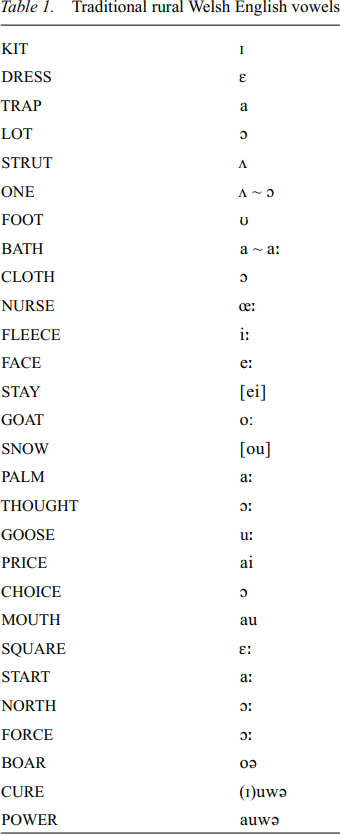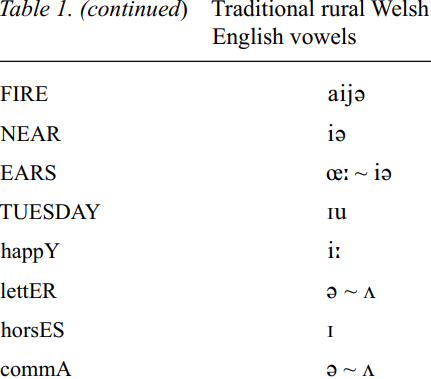


 Grammar
Grammar
 Tenses
Tenses
 Present
Present
 Past
Past
 Future
Future
 Parts Of Speech
Parts Of Speech
 Nouns
Nouns
 Verbs
Verbs
 Adverbs
Adverbs
 Adjectives
Adjectives
 Pronouns
Pronouns
 Pre Position
Pre Position
 Preposition by function
Preposition by function 
 Preposition by construction
Preposition by construction
 Conjunctions
Conjunctions
 Interjections
Interjections
 Grammar Rules
Grammar Rules
 Linguistics
Linguistics
 Semantics
Semantics
 Pragmatics
Pragmatics
 Reading Comprehension
Reading Comprehension|
Read More
Date: 2024-04-25
Date: 2024-03-23
Date: 2024-04-19
|
The most comprehensive collection of Welsh English data is in the archives of the Survey of Anglo-Welsh Dialects (henceforth SAWD) at the Department of English, University of Wales Swansea. Under the directorship of David Parry, material was collected in rural areas of Wales between 1968 and 1982 (cf. Parry 1977–1979, 1999), and in urban areas between 1985 and 1987. SAWD, which aims to provide an overview of Welsh English phonology, focusing on traditional, rural Welsh English. Use will be made, in particular, of the analysis and description attempted in David Parry’s A Grammar and Glossary of the Conservative Anglo-Welsh Dialects of Rural Wales (1999). Parry (1999) attempts a general phonemicization for Welsh English based on the rural data, drawn from the 60-plus age-group, which can be presented as follows:

Table 1 maps this broad phonemicization against the lexical set. STAY and SNOW are included for comparison with FACE and GOAT respectively, and highlight a tricky area in the phonemicization. In Table 1, the vowels for STAY and SNOW are not given phonemic status, in order to remain consistent with the system above. However, discussion of alternative analyses and the status of the vowels in FACE/ STAY and GOAT/SNOW.
The remainder discusses the phonological system in detail, including realizations of the vowel phonemes and significant regional variations (under headings from the lexical set), followed by a description of noteworthy consonantal and prosodic features.


|
|
|
|
تفوقت في الاختبار على الجميع.. فاكهة "خارقة" في عالم التغذية
|
|
|
|
|
|
|
أمين عام أوبك: النفط الخام والغاز الطبيعي "هبة من الله"
|
|
|
|
|
|
|
قسم شؤون المعارف ينظم دورة عن آليات عمل الفهارس الفنية للموسوعات والكتب لملاكاته
|
|
|